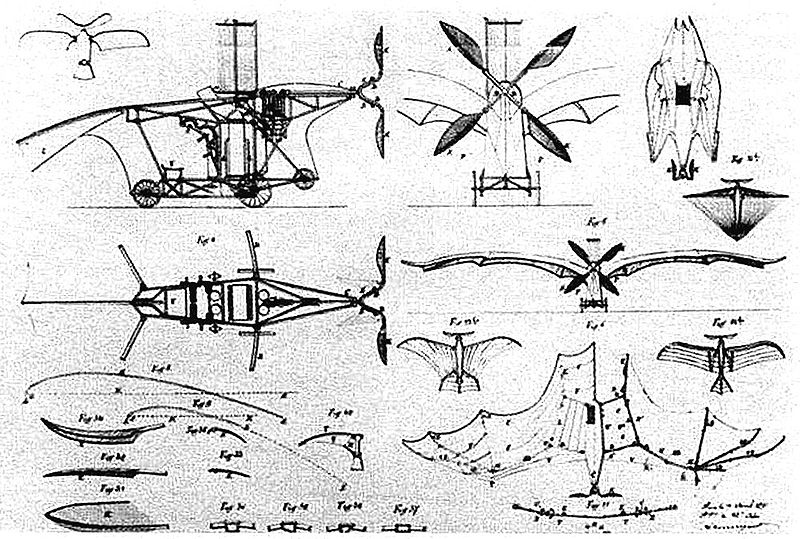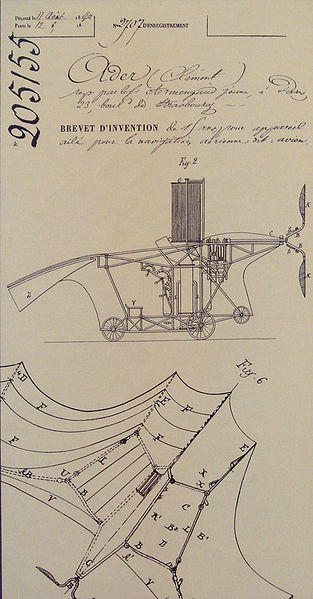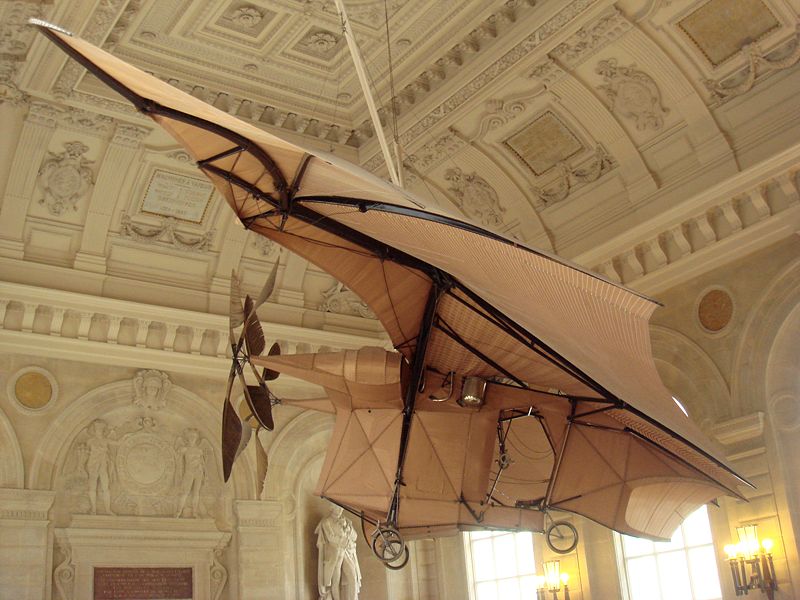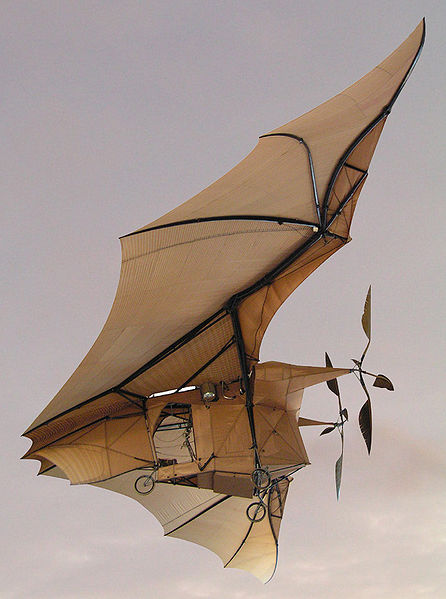<Back to Index>
- Aviation Pioneer Clément Ader, 1841
- Writer Giacomo Girolamo Casanova de Seingalt, 1725
- French Revolutionary Armand - Gaston Camus, 1740
PAGE SPONSOR
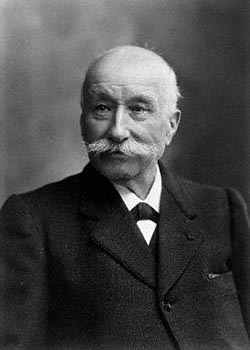
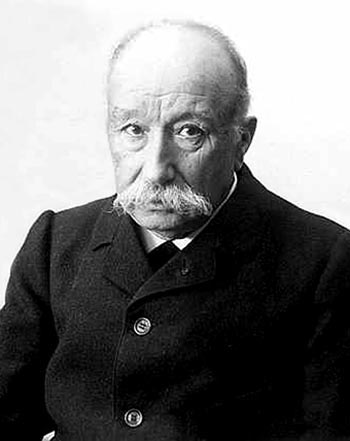
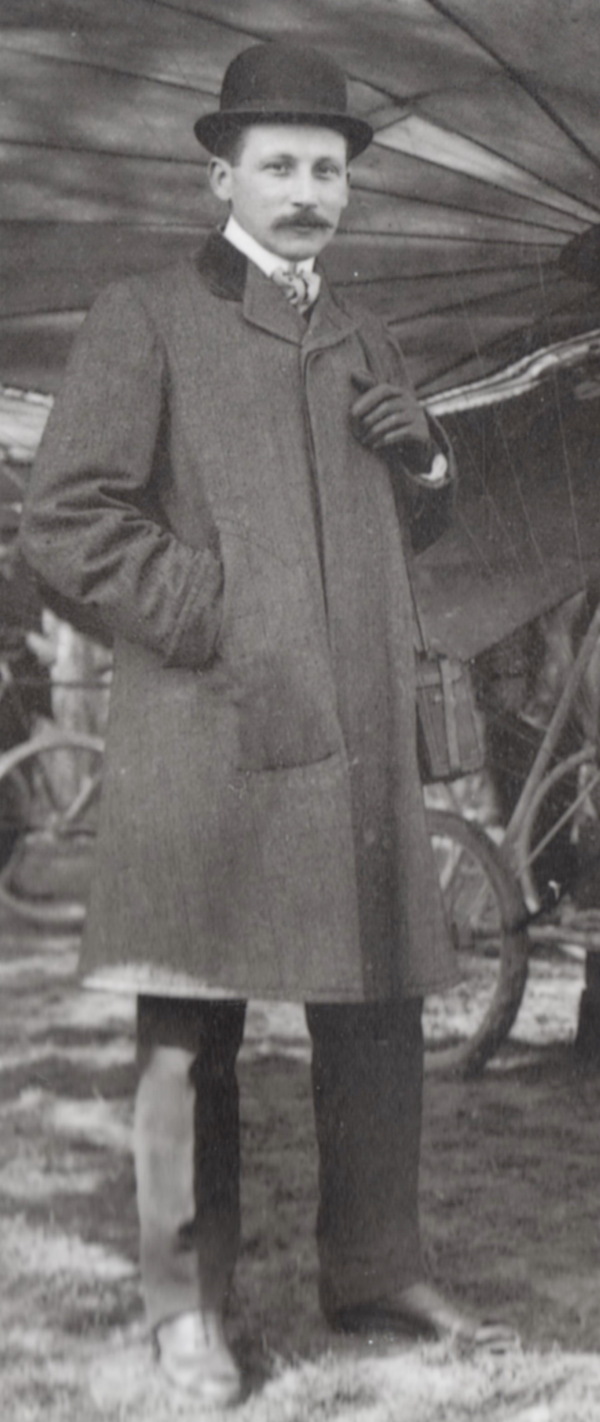
Clément Ader (2 April 1841 – 5 March 1925) was a French inventor and engineer born in Muret, Haute Garonne, and is remembered primarily for his pioneering work in aviation.
Ader innovated in a number of electrical and mechanical engineering fields. He originally studied electrical engineering, and in 1878 improved on the telephone invented by Alexander Graham Bell. After refining the Bell Telephone he established the first such network in Paris in 1880. In 1881, he invented the "théâtrophone", a system of telephonic transmission where listeners received a separate channel for each ear, enabling stereophonic perception of the actors on a set; it was this invention which gave the first stereo transmission of opera spectacles, over a distance of 2 miles (3 km) in 1881. In 1903, he devised a V8 engine for the Paris - Madrid race; although three or four were produced, none was sold.
Following this, he turned to mechanical flight and concentrated much time and money on it until the end of his life. Using the studies of Louis Pierre Mouillard (1834 – 1837) on the flight of birds, he constructed his first flying machine in 1886, the Éole. It was a bat like design run by a lightweight steam engine of his own invention (4 cylinders developing 20 horsepower (15 kW)). The weight was no more than 4 g/W (7 pounds per horsepower), and it drove a four - blade propeller. The wings, with a span of 14 metres, were equipped with a system of warping and all together weighed 300 kg (650 pounds). On 9 October 1890, Ader attempted a flight of the Éole. Historians say the aircraft evidently took off, reached a height of 20 cm, and flew uncontrolled approximately 50m, 13 years before the Wright Brothers.
Ader undertook the construction of an aircraft he called the Avion II (also referred to as the Zephyr or Éole II). Most sources agree that work on this aircraft was never completed, and it was abandoned in favour of the Avion III, However, Ader claimed in later life that he flew the Avion II in August 1892 for a distance of 200 metres in Satory, which was then a military base, and which is still today a military airport near Paris.
Ader's progress attracted the interest of the minister of war, Charles de Freycinet. With the backing of the French War office, Ader developed and constructed the Avion III. It was like an enormous bat made of linen and wood, with a 16 yard (15 m) wingspan, equipped with two puller propellers of four blades, each powered by a steam engine of 30 hp (22 kW). After extensive taxi tests, Ader attempted a flight at Satory on 14 October 1897. Some witnesses contend that the Avion rolled, took off and, viewed by the official commission, flew a distance of more than 300 yards (300 m), while others contend that the Avion III crashed before even taking off. In any event, the commission was not impressed and withdrew its funding, but kept the results secret. After the Wright brothers made their flight, the commission released reports on Ader's flights, stating that they were successful.
Clément Ader remained an active proponent of the development of aviation. He published in 1909 L'Aviation Militaire, a very popular book which went through 10 editions in the five years until the beginning of World War I, which is especially famous for its vision of air warfare and its precise description of the concept of the modern aircraft carrier with a flat flight deck, an island superstructure, deck elevators and a hangar bay. His published concept for the aircraft carrier, relayed by the US Naval Attaché in Paris were followed by the first trials in the United States in November 1910.
His Avion is still displayed at the museum of the Conservatory of Arts and Industry in Paris. Non-French aviation historians often discredit any claims of priority, since all flight attempts ended in crashes, many were disputed, and Ader greatly exaggerated his achievements in later life. Nonetheless, Ader is still admired for his efforts. In 1938, France issued a postage stamp honoring him, and Airbus named one of its aircraft assembly sites in Toulouse after him.
